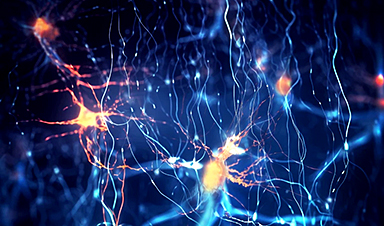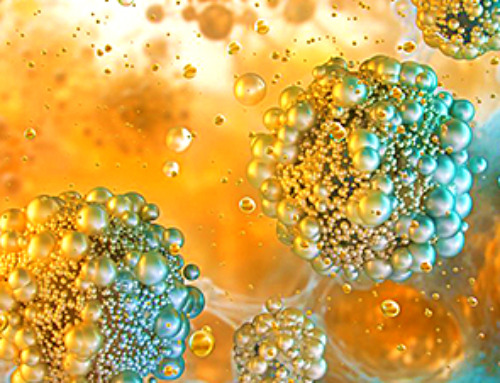By eavesdropping on the brains of living people, scientists have created the highest-resolution map yet of the neurons that encode the meanings of various words1. The results hint that, across individuals, the brain uses the same standard categories to classify words — helping us to turn sound into sense.
The study is based on words only in English. But it’s a step along the way to working out how the brain stores words in its language library, says neurosurgeon Ziv Williams at the Massachusetts Institute of Technology in Cambridge. By mapping the overlapping sets of brain cells that respond to various words, he says, “we can try to start building a thesaurus of meaning”.
The work was published today in Nature.
Mapping meaning
The brain area called the auditory cortex processes the sound of a word as it enters the ear. But it is the brain’s prefrontal cortex, a region where higher-order brain activity takes place, that works out a word’s ‘semantic meaning’ — its essence or gist.
Previous research2 has studied this process by analysing images of blood flow in the brain, which is a proxy for brain activity. This method allowed researchers to map word meaning to small regions of the brain.
But Williams and his colleagues found a unique opportunity to look at how individual neurons encode language in real time. His group recruited ten people about to undergo surgery for epilepsy, each of whom had had electrodes implanted in their brains to determine the source of their seizures. The electrodes allowed the researchers to record activity from around 300 neurons in each person’s prefrontal cortex.
As participants listened to multiple short sentences containing a total of around 450 words, the scientists recorded which neurons fired and when. Williams says that around two or three distinct neurons lit up for each word, although he points out that the team recorded only the activity of a tiny fraction of the prefrontal cortex’s billions of neurons. The researchers then looked at the similarity between the words that activated the same neuronal activity.
A neuron for everything
The words that the same set of neurons responded to fell into similar categories, such as actions, or words associated with people. The team also found that words that the brain might associate with one another, such as ‘duck’ and ‘egg’, triggered some of the same neurons. Words with similar meanings, such as ‘mouse’ and ‘rat’, triggered patterns of neuronal activity that were more similar than the patterns triggered by ‘mouse’ and ‘carrot.’ Other groups of neurons responded to words associated with more-abstract concepts: relational words such as ‘above’ and ‘behind’, for instance.

Mind-reading machines are here: is it time to worry?
The categories that the brain assigns to words were similar between participants, Williams says, suggesting human brains all group meanings in the same way.
The prefrontal cortex neurons didn’t distinguish words by their sounds, only their meanings. When a person heard the word ‘son’ in a sentence, for instance, words associated with family members lit up. But those neurons didn’t respond to ‘Sun’ in a sentence, despite these words having an identical sound.
Mind reading
To an extent, the researchers were able to determine what people were hearing by watching their neurons fire. Although they couldn’t recreate exact sentences, they could tell, for example, that a sentence contained an animal, an action and a food, in that order.
“To get this level of detail and have a peek at what’s happening at the single-neuron level is pretty cool,” says Vikash Gilja, an engineer at the University of California San Diego and chief scientific officer of the brain–computer interface company Paradromics. He was impressed that the researchers could determine not only the neurons that corresponded to words and their categories, but also the order in which they were spoken.
Recording from neurons is much faster than using imaging; understanding language at its natural speed, he says, will be important for future work developing brain–computer interface devices that restore speech to people who have lost that ability.
News
Fever-Proof Bird Flu Variant Could Fuel the Next Pandemic
Bird flu viruses present a significant risk to humans because they can continue replicating at temperatures higher than a typical fever. Fever is one of the body’s main tools for slowing or stopping viral [...]
What could the future of nanoscience look like?
Society has a lot to thank for nanoscience. From improved health monitoring to reducing the size of electronics, scientists’ ability to delve deeper and better understand chemistry at the nanoscale has opened up numerous [...]
Scientists Melt Cancer’s Hidden “Power Hubs” and Stop Tumor Growth
Researchers discovered that in a rare kidney cancer, RNA builds droplet-like hubs that act as growth control centers inside tumor cells. By engineering a molecular switch to dissolve these hubs, they were able to halt cancer [...]
Platelet-inspired nanoparticles could improve treatment of inflammatory diseases
Scientists have developed platelet-inspired nanoparticles that deliver anti-inflammatory drugs directly to brain-computer interface implants, doubling their effectiveness. Scientists have found a way to improve the performance of brain-computer interface (BCI) electrodes by delivering anti-inflammatory drugs directly [...]
After 150 years, a new chapter in cancer therapy is finally beginning
For decades, researchers have been looking for ways to destroy cancer cells in a targeted manner without further weakening the body. But for many patients whose immune system is severely impaired by chemotherapy or radiation, [...]
Older chemical libraries show promise for fighting resistant strains of COVID-19 virus
SARS‑CoV‑2, the virus that causes COVID-19, continues to mutate, with some newer strains becoming less responsive to current antiviral treatments like Paxlovid. Now, University of California San Diego scientists and an international team of [...]
Lower doses of immunotherapy for skin cancer give better results, study suggests
According to a new study, lower doses of approved immunotherapy for malignant melanoma can give better results against tumors, while reducing side effects. This is reported by researchers at Karolinska Institutet in the Journal of the National [...]
Researchers highlight five pathways through which microplastics can harm the brain
Microplastics could be fueling neurodegenerative diseases like Alzheimer's and Parkinson's, with a new study highlighting five ways microplastics can trigger inflammation and damage in the brain. More than 57 million people live with dementia, [...]
Tiny Metal Nanodots Obliterate Cancer Cells While Largely Sparing Healthy Tissue
Scientists have developed tiny metal-oxide particles that push cancer cells past their stress limits while sparing healthy tissue. An international team led by RMIT University has developed tiny particles called nanodots, crafted from a metallic compound, [...]
Gold Nanoclusters Could Supercharge Quantum Computers
Researchers found that gold “super atoms” can behave like the atoms in top-tier quantum systems—only far easier to scale. These tiny clusters can be customized at the molecular level, offering a powerful, tunable foundation [...]
A single shot of HPV vaccine may be enough to fight cervical cancer, study finds
WASHINGTON -- A single HPV vaccination appears just as effective as two doses at preventing the viral infection that causes cervical cancer, researchers reported Wednesday. HPV, or human papillomavirus, is very common and spread [...]
New technique overcomes technological barrier in 3D brain imaging
Scientists at the Swiss Light Source SLS have succeeded in mapping a piece of brain tissue in 3D at unprecedented resolution using X-rays, non-destructively. The breakthrough overcomes a long-standing technological barrier that had limited [...]
Scientists Uncover Hidden Blood Pattern in Long COVID
Researchers found persistent microclot and NET structures in Long COVID blood that may explain long-lasting symptoms. Researchers examining Long COVID have identified a structural connection between circulating microclots and neutrophil extracellular traps (NETs). The [...]
This Cellular Trick Helps Cancer Spread, but Could Also Stop It
Groups of normal cbiells can sense far into their surroundings, helping explain cancer cell migration. Understanding this ability could lead to new ways to limit tumor spread. The tale of the princess and the [...]
New mRNA therapy targets drug-resistant pneumonia
Bacteria that multiply on surfaces are a major headache in health care when they gain a foothold on, for example, implants or in catheters. Researchers at Chalmers University of Technology in Sweden have found [...]
Current Heart Health Guidelines Are Failing To Catch a Deadly Genetic Killer
New research reveals that standard screening misses most people with a common inherited cholesterol disorder. A Mayo Clinic study reports that current genetic screening guidelines overlook most people who have familial hypercholesterolemia, an inherited disorder that [...]





















